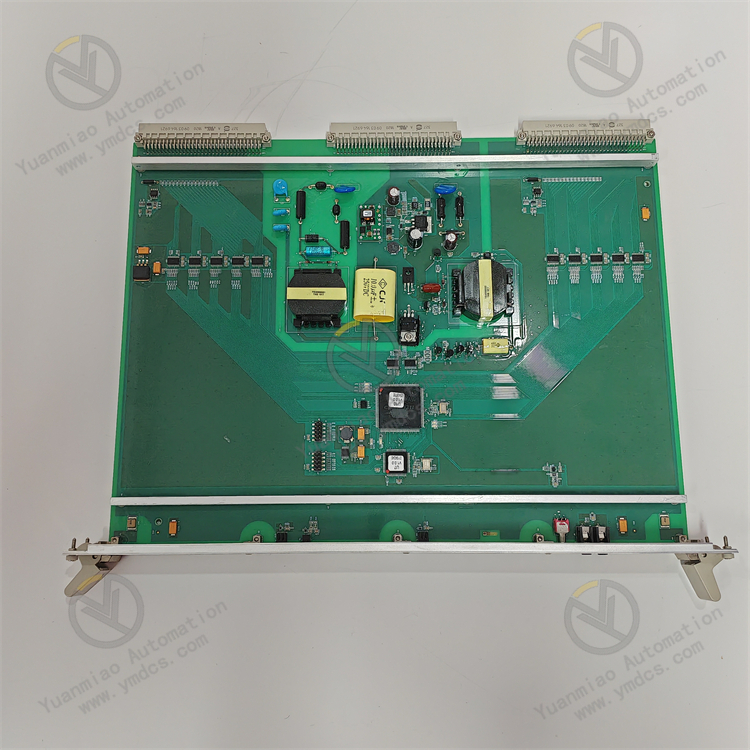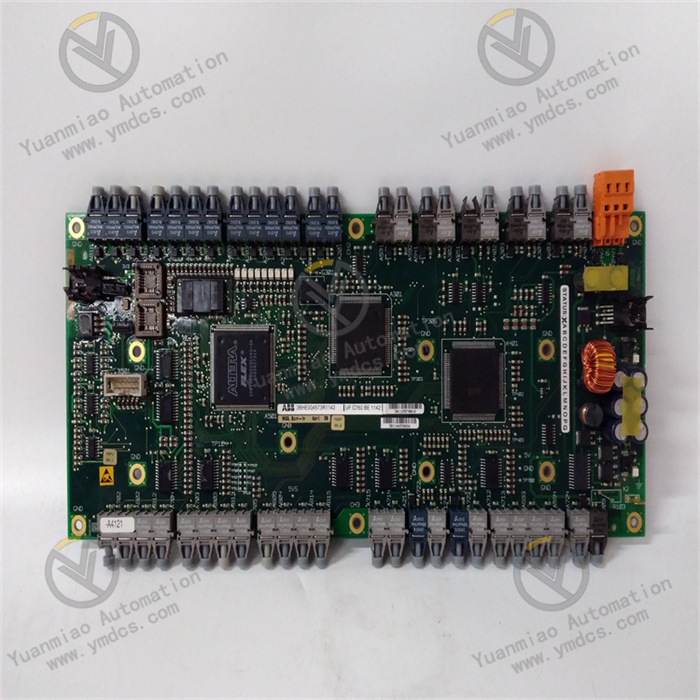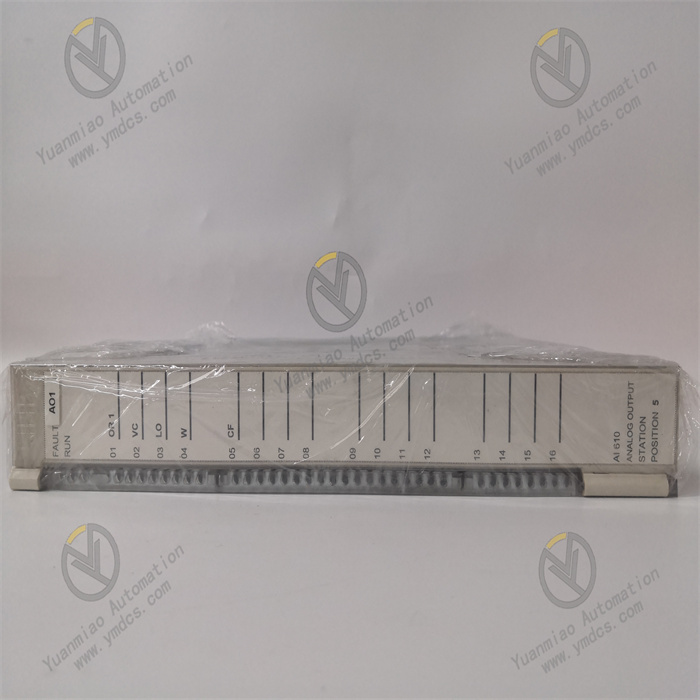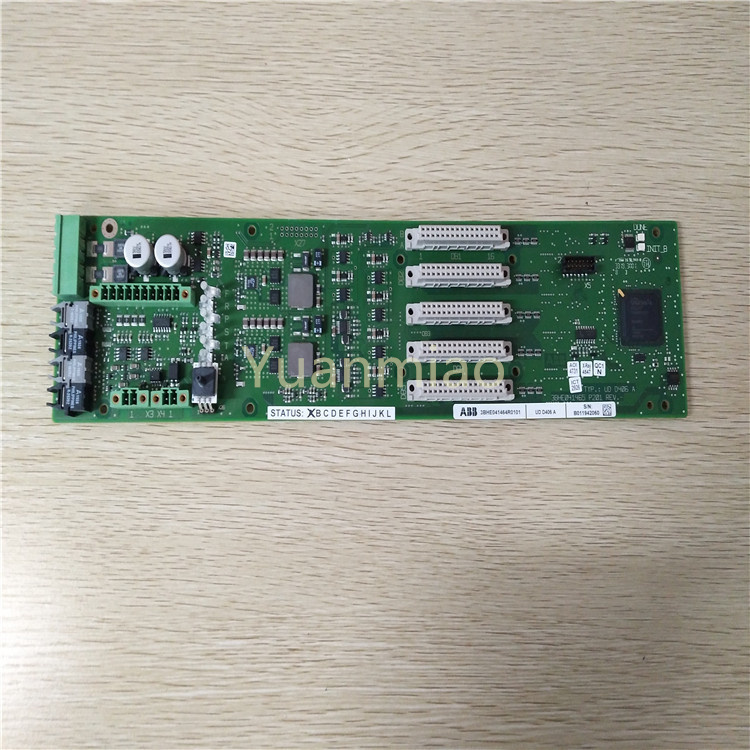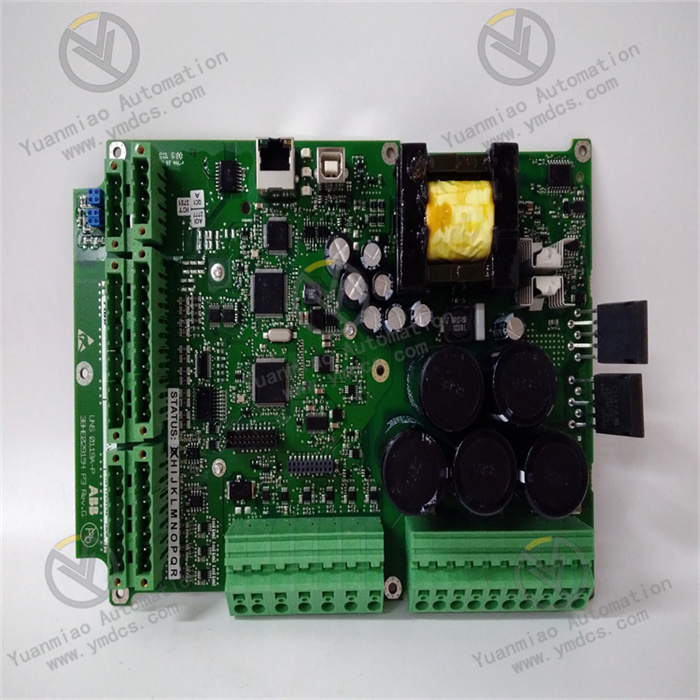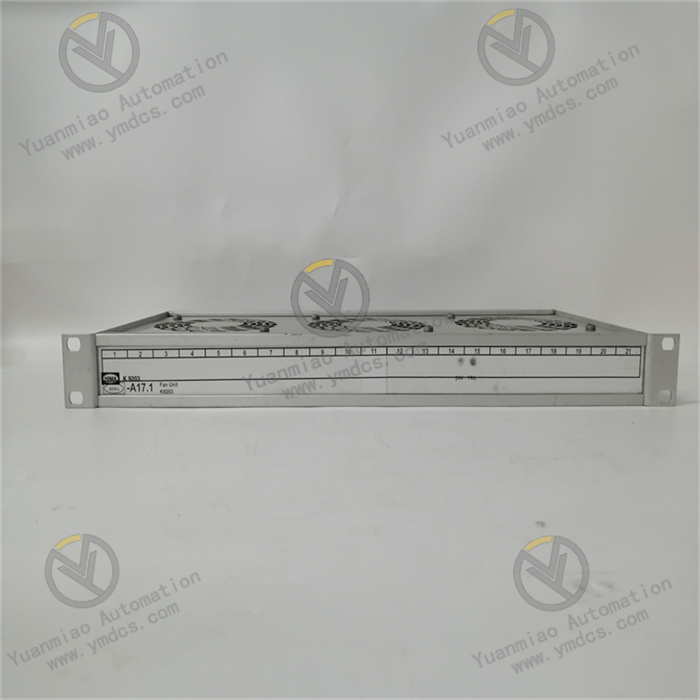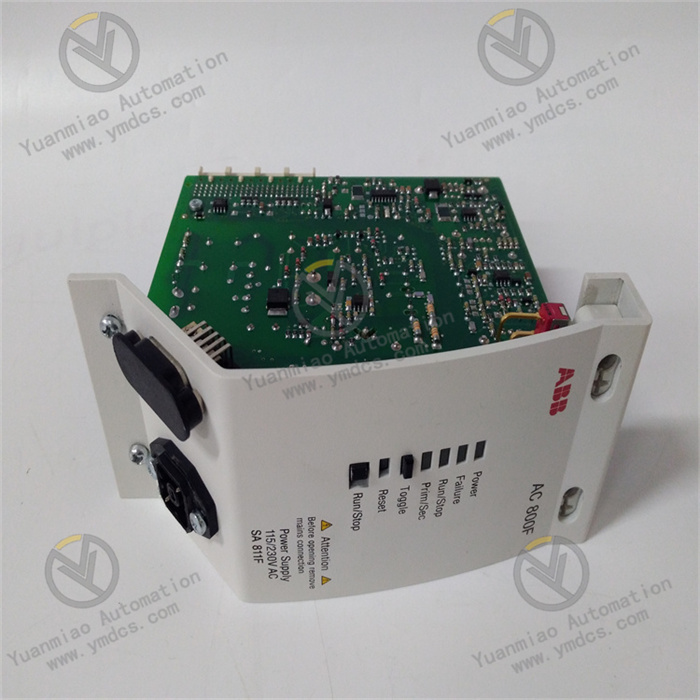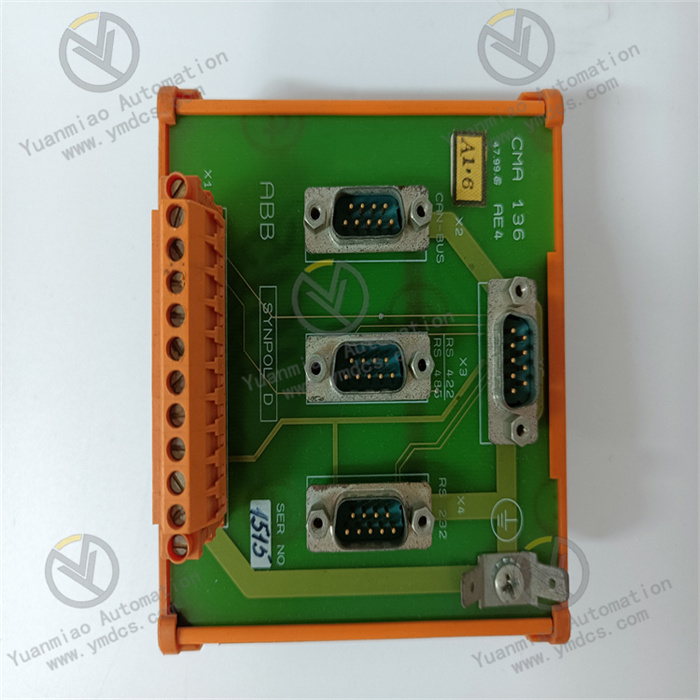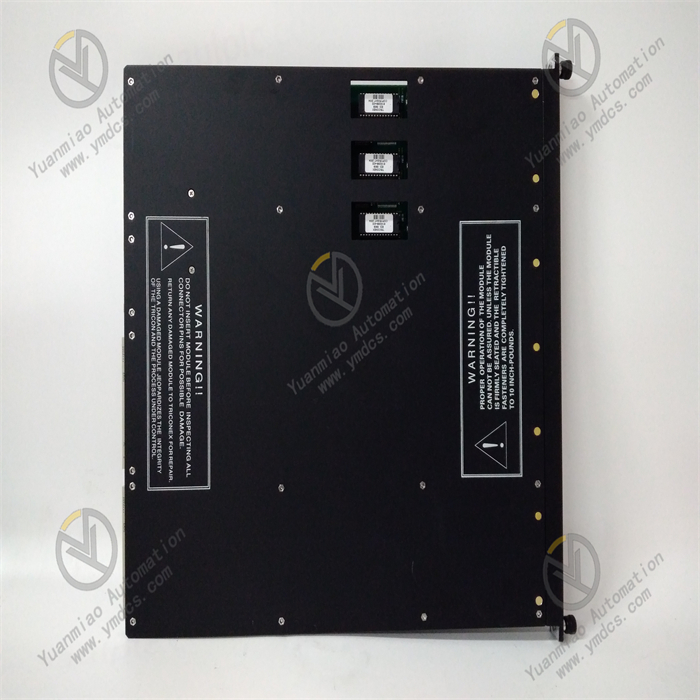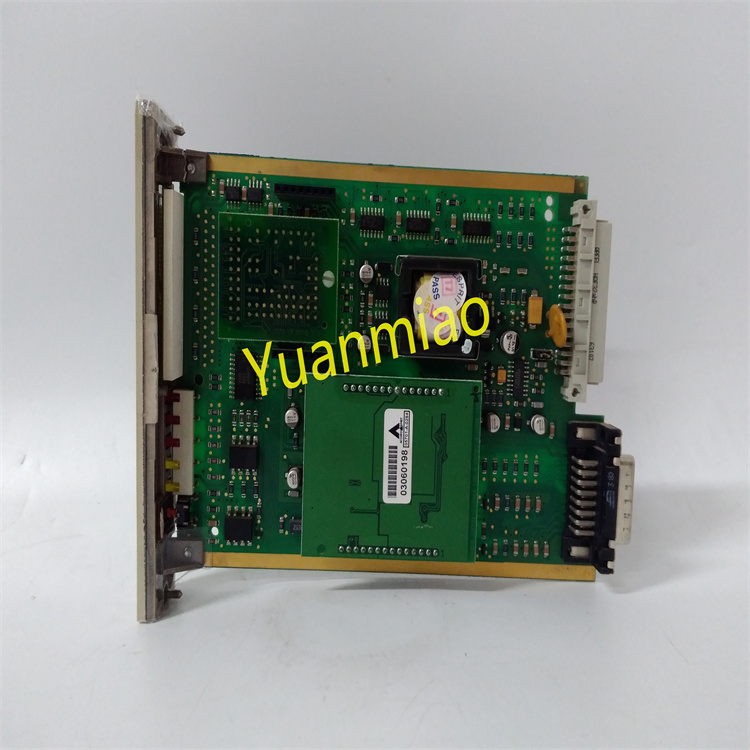Description
ABB XVC767AE105 38HB007209R0105
ABB XVC767AE105 (3BHB007209R0105) is an industrial vibration monitoring module, serving as an expansion module for the AC 800M series controllers. It is primarily used for vibration condition monitoring and protection of rotating machinery such as motors, compressors, and steam turbines.
I. Functional Features
| Dimension | Core Characteristics |
|---|---|
| Monitoring Objects | Supports measurement of parameters such as shaft vibration, bearing vibration, displacement, velocity, and acceleration, compatible with various industrial sensors. |
| Channel Configuration | Typically enables multi-channel synchronous acquisition (specific channel count refer to manual), supporting parallel monitoring of multiple measurement points. |
| Signal Processing | Built-in functions like filtering, spectral analysis (e.g., FFT), and trend analysis to extract vibration characteristic parameters in real time. |
| Communication Capability | Supports industrial bus protocols such as PROFINET and Modbus, enabling seamless integration with ABB AC 800M control systems or third-party platforms. |
| Protection Functions | Provides multi-level alarms (e.g., pre-alarm, alarm, shutdown) and event logging, supporting relay outputs to trigger protection actions. |
| Industrial Adaptability | Wide operating temperature range, electromagnetic interference resistance (EMC certified), and redundant design (for some models), suitable for harsh industrial environments. |
II. Functional Specifications
1. Multi-Type Sensor Adaptation
- Supported Sensor Types:
- Eddy current sensors (for shaft vibration/displacement measurement, e.g., ABB PR642x series).
- Accelerometers (e.g., IEPE type, for bearing vibration measurement).
- Velocity sensors (magnetoelectric, directly outputting vibration velocity signals).
- Signal Conditioning: Built-in excitation power supply (e.g., -24V for eddy current preamps), anti-aliasing filters, signal amplifiers, etc., to simplify front-end wiring.
2. High-Precision Measurement and Analysis
- Measured Parameters:
- Vibration amplitude: Peak-to-peak (P-P), root mean square (RMS), peak value.
- Vibration frequency: Fundamental frequency (rotor speed frequency), harmonic components (e.g., 2X, 3X), total value.
- Special functions: Key phase measurement (for rotor dynamic balancing analysis), envelope analysis (bearing fault diagnosis).
- Sampling and Processing:
- High sampling rate (e.g., 25.6 kHz or higher) to ensure accurate capture of high-frequency vibration signals (e.g., gearbox noise).
- Built-in FFT algorithm to generate real-time spectrograms, supporting online fault feature analysis (e.g., spectral peak shift, harmonic energy anomalies).
3. Flexible Alarm and Protection Mechanisms
- Multi-Level Threshold Settings:
- Each channel can independently configure three levels of thresholds: Pre-alarm (Warning), Alarm, and Danger.
- Supports delayed triggering (e.g., 0.1–300s) to avoid false operations caused by transient interference.
- Output Interfaces:
- Analog output: 4–20mA (vibration amplitude, mappable to displacement/velocity/acceleration units).
- Digital output: Relay contacts (e.g., 24V DC/5A) for triggering shutdowns, audible-visual alarms, etc.
- Status indication: Front-panel LED lights real-time channel status (normal/alarm/fault).
4. Industrial-Grade Communication and Integration
- Communication Protocols:
- Standard PROFINET IO or EtherCAT (model-dependent) for real-time data interaction with ABB AC 800M controllers.
- Optional Modbus RTU/TCP, OPC UA, etc., compatible with third-party SCADA systems or cloud platforms.
- Data Interaction:
- Real-time upload of vibration amplitude, spectral data, and alarm status to the control system.
- Supports remote parameter configuration (e.g., threshold modification, filter parameter adjustment).
5. High-Reliability Design
- Hardware Features:
- Redundant power supply: Supports dual power inputs (e.g., 24V DC redundancy) to ensure continuous system operation.
- Anti-interference capability: Complies with IEC 61000 EMC standards, suitable for strong electromagnetic environments (e.g., near variable frequency drives).
- Mechanical design: DIN rail mounting, compact size, supporting high-density integration.
- Environmental Adaptability:
- Operating temperature: -40°C ~ +70°C (wide-temperature models).
- Protection level: IP20 (indoor), optional IP67 protective housing (suitable for wet/dusty environments).
6. Convenient Commissioning and Maintenance
- Configuration Tools:
- Use ABB Control Builder M software for parameter setting, channel calibration, and spectral display.
- Supports Plug-and-Play, automatically identifying module models and firmware versions.
- Diagnostic Functions:
- Built-in self-diagnosis (e.g., sensor disconnection detection, power failure alarms).
- Historical data logging: Stores recent alarm events and vibration trend data (exportable for analysis).
- Calibration Support:
- Static calibration: Verify linearity by inputting standard signals via software.
- Dynamic calibration: Connect to a vibration table to input known frequency/amplitude signals for automatic coefficient adjustment.
III. Application Scenarios
- Rotating Machinery Condition Monitoring
Real-time monitoring of shaft vibrations in motors, fans, and compressors to early-warning faults such as bearing wear and rotor imbalance. - Unit Protection Systems
As a core module of Machinery Protection Systems (MPS), it 联动 with PLC/DCS to achieve shutdown protection. - Predictive Maintenance (PdM)
Develop optimized maintenance plans through long-term trend analysis (e.g., vibration amplitude growth rate) to reduce unplanned downtime. - Energy and Heavy Industry
Applied to health management of critical equipment such as power plant steam turbines, metallurgical rolling mills, and chemical reactors.
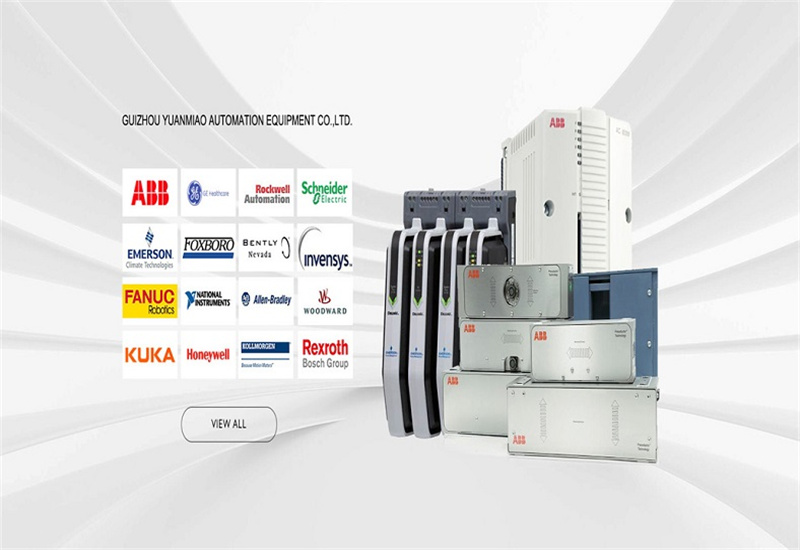
IV. General Installation and Configuration Steps for ABB XVC767AE105 3BHB007209R0105
Installation Steps
- Pre-Installation Preparation:
- Check that the device and its accessories are complete and undamaged, and confirm the model, specifications, and serial number.
- Carefully read ABB’s technical documents such as installation manuals and user guides to understand its functions, performance parameters, and installation requirements.
- Ensure the installation environment meets operational requirements (temperature, humidity, electromagnetic interference, etc.), and prepare necessary tools/materials (screwdrivers, wrenches, terminal blocks, etc.).
- Location Selection:
Choose a stable, vibration-free, and easily accessible location with sufficient space for maintenance and heat dissipation. - Fixed Installation:
Secure the module in place using appropriate mounting brackets or screws to prevent loosening due to vibration or other factors. - Wiring Connections:
Correctly connect the module’s power, signal, and control cables according to detailed wiring diagrams and technical documents, ensuring all connections are secure and free of looseness or short circuits.
Configuration Steps
- Communication Interface Configuration:
Configure the module’s communication interfaces (e.g., Ethernet, serial communication) and set parameters (baud rate, address, etc.) to match other devices in the system. - Functional Parameter Setting:
Adjust functional parameters (e.g., current step compensation, power factor compensation, protection threshold settings) according to technical documents and application scenarios, tailored to actual process requirements and system configurations. - System Commissioning:
Integrate the module into the overall system for joint debugging. Observe its operation, verify correct response to input signals and output control signals, and ensure overall system stability and compliance with design requirements.


